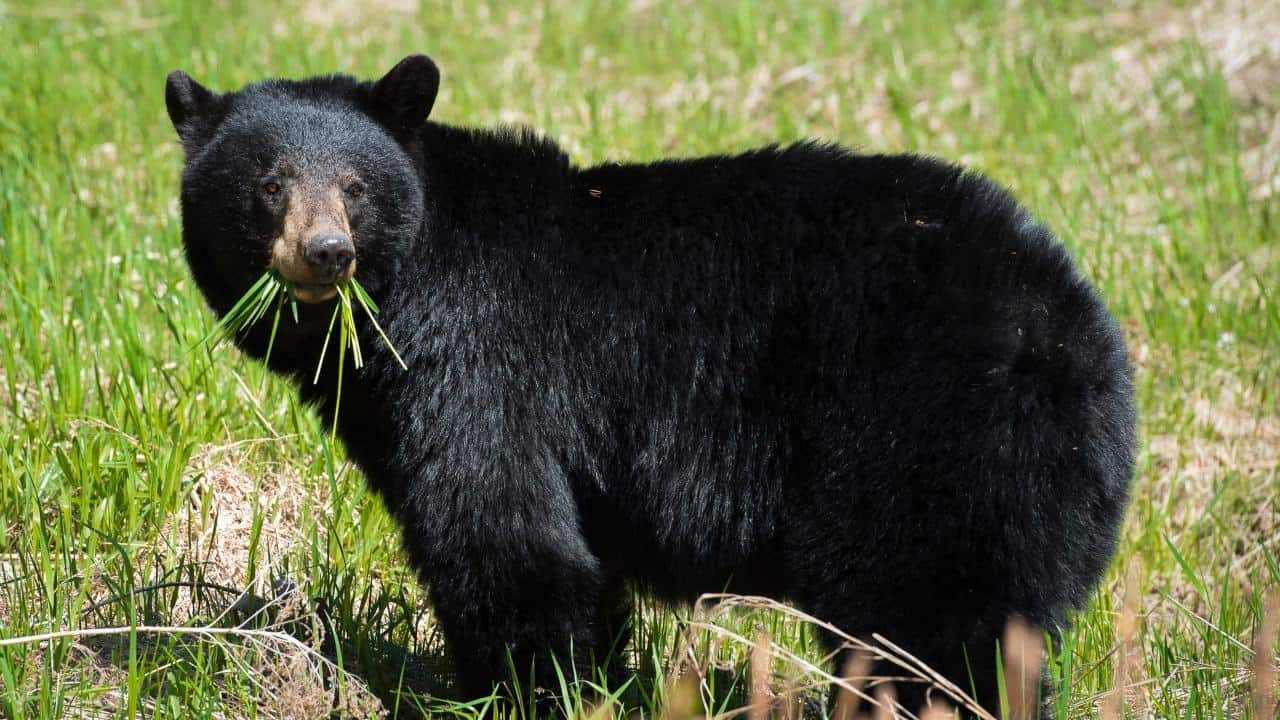Bear sightings on the rise in Pickering and Uxbridge
Published July 27, 2023 at 9:47 am

A bear in your backyard is not something suburbanites see every day but sightings of the big bruins in Pickering and Uxbridge are up dramatically this year, with calls to the Natural Resources Ministry Bear Wise hotline up more than 22 per cent from the ten-year average.
You can blame the increase of suburban bear spotting on a late frost in the spring or slim pickings at prime fattening time last fall. You can also throw some shade at the proliferation of bird feeders in suburban homes that are attracting the big fellows in for a tasty snack.
Whatever the reason, bear sightings are on the rise with 803 calls made to the hotline for southern Ontario between April 1 and July 9, with 148 of those calls in the last 16 days of that period alone.
Many of those are for the same bears seen by different people, notes Marcelo Mayo, a communications spokesperson for the ministry. “It is important to note that in urban areas a high number of reports are often the same bear spotted multiple times.”
Still, that’s a lot of bear sightings close to residential areas, with numerous calls this spring and early summer of bears in Uxbridge near the communities of Goodwood and Leaskdale and in Pickering on the Greenwood Trail near Concession 5, in the hamlet of Claremont and near Concession 8 and Sideline 28.

The rise in sightings in suburbia may be inevitable, the City of Pickering declared in a statement. “As our community continues to grow, we expand into the natural territory of many wild animals. As they adapt to their environment, they can be found living in our backyards, in and under our sheds, porches, garages and decks,” the statement read. “Black Bears do live in north Pickering, as well as Uxbridge and other areas in north Durham Region, and sightings this time of year are considered normal.”
The number of sightings south of Algonquin Park is the highest in ten years, however, and Mayo said the ministry attributes the rise in bear activity down here to three key factors:
- The bears went into dens last fall in less than ideal condition from the average/poor availability of natural foods in 2022
- a significant frost very late this spring – May 18 – may have caused damage to natural food development and a dry spring is not helping matters
- poor management of unnatural foods – bird feeders in particular – by people continues to draw bears to urban areas
The sweet (to a bear) stench of garbage, the aroma of leftover meat on barbecue grills, ripe fruit and pet food left outside and the scent of suet – loved by birds and bears alike – in those bird feeders is also attracting bears to town, she added.
Black bears primarily inhabit forested areas but Mayo noted there has always been a “low-density population” of black bears in the northern portions of York and Durham regions and they will travel long distances if food is scarce.
Bears will follow natural corridors, such as river valleys, from the Oak Ridges Moraine towards Lake Ontario, she added. As the bears move south those river valley corridors can “funnel them into more developed areas,” such as Pickering, Uxbridge, Markham and Newmarket.
“As the bears move into agricultural landscapes and larger urban centres, the potential for sightings increases due to the larger number of people and the visibility of bears in open landscapes.”
Last year a Hold-and-Secure had to be implemented at schools in Beaverton three times in a month after bears were seen in the area, with one lockdown placed after a young bear chose to cool off from the heat with a dip in a local pond.

But Mayo points out that not all bear sightings are cause for alarm. “Bears that come into populated areas are not always a threat to public safety.”
Attacks are extremely rare but do happen on occasion, sometimes with tragic outcomes for us – an American tourist was killed in northwestern Onatrio in 2019, the first fatalatity in 14 years – and always for the bear.
Residents can and should still take some simple precautions to help prevent bears from developing a liking for your backyard or your neighbourhood, however. Bears are less likely to visit if you:
- fill bird feeders only through the winter months
- keep your pets on a leash
- store garbage in a bear-resistant container with a tight-fitting lid and in a secure shed or garage
- only put garbage out on garbage day, not the night before
- keep meat scraps in the freezer until garbage day
- remove grease and food residue from barbecue grills, including the grease trap, after each use
- do not use outdoor fridges or freezers
- do not put meat, fish or sweet food (including fruit) in your outdoor composter
- pick all ripe fruit off trees, and remove vegetables and fallen fruit from the ground
- never purposely feed bears (or other wildlife) or try to approach them
- encourage your neighbours to practice these bear-wise habits
The Ministry of Natural Resources and Forestry’s toll-free Bear Wise reporting line (1-866-514-2327 or (705) 945-7641 operates 24 hours a day, seven days a week during the active period for black bear from April 1- November 30. Wildlife technicians monitor these reports and provide advice about bear behaviour, how to avoid human-bear interactions and how to manage attractants on your property.
Residents can also visit the Bear Wise website (https://www.ontario.ca/page/prevent-bear-encounters-bear-wise) for advice in non-emergency situations. If a bear poses an immediate threat to public safety or is exhibiting threatening or aggressive behaviour, call 911 or your local police.







